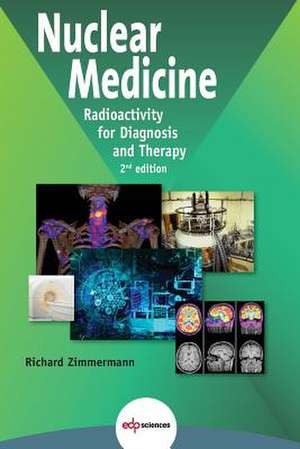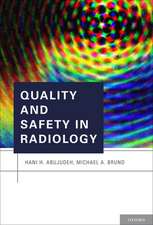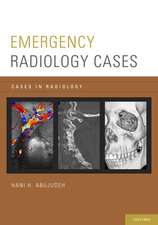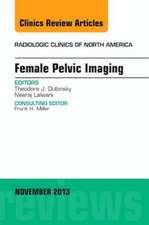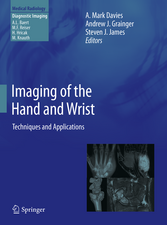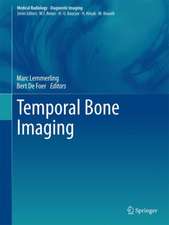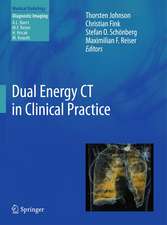Nuclear Medicine
Autor Richard Zimmermannen Limba Engleză Paperback
Nuclear medicine is a growing specialized medical field in which radiopharmaceuticals, i.e. drugs associated to radioactivity, are used for diagnostic or therapeutic purposes. Since 1942, nuclear medicine has progressed in such a way that it became a major diagnostic tool in hospitals. The past ten years have seen the introduction of major technical breakthroughs which will considerably modify the landscape of cancer treatment.
Once injected to the patient, the radiopharmaceutical drug aims at the tumour cell - including metastases - selectively, settles there, and emits radiation. Depending on the radiation type, the drug will either help identify the cells or destroy them. Applications are not limited to oncology; indeed, nuclear medicine has found interesting applications in cardiology and neurology as well.
The new millennium saw the introduction of the Hybrid imaging technology PET/CT which combines the Positron Emission Tomography (PET) modality with conventional high quality x-ray imaging. It took another two years until PET could be combined with Magnetic Resonance Imaging (MRI) in the hybrid equipment PET/MR. New tracers (drugs for diagnosis) also came on the market with different diseases as targets, such as prostate cancer, neuroendocrine tumours, or Alzheimer's disease. But the recent introduction of radiotherapeutics in the treatment of cancer has brought major changes on the market, for they can be much more powerful and specific than chemotherapeutics or external radiation therapy. Combining radiodiagnostics to select positive responders to a treatment with efficient radiotherapeutics opens a highway for the development of theranostics, another word for personalized medicine.
This scientific book aims to introduce nuclear medicine to a larger audience, pointing out, among other things, the difficulties met by both physicians and patients when trying to access new technologies. This second edition shows how much progress has been made over the past ten years since the original book was published, and how much can be expected for patients within the next few years.
| Toate formatele și edițiile | Preț | Express |
|---|---|---|
| Paperback (2) | 155.87 lei 6-8 săpt. | |
| – | 284.79 lei 3-5 săpt. | |
| EDP Sciences – 31 dec 2006 | 155.87 lei 6-8 săpt. |
Preț: 284.79 lei
Preț vechi: 299.79 lei
-5% Nou
54.50€ • 59.18$ • 45.78£
Carte disponibilă
Livrare economică 01-15 aprilie
Specificații
ISBN-10: 2759821404
Pagini: 218
Dimensiuni: 140 x 210 x 15 mm
Greutate: 0.34 kg
Descriere
Nuclear medicine is a specialized medical field based on the application of radiopharmaceuticals, i.e. drugs associated to radioactivity, for diagnosis or therapeutic purposes. In the past fifty years, nuclear medicine has progressed in such a way that it is now a major tool in hospitals. Nowadays, this technology enables to better detect, observe and describe diseases, and also to improve treatments. Cancer therapy is the main application of this speciality. Once injected to the patient, the radiopharmaceutical drug aims selectively at the tumoral cells, including the metastases, settles there and emits radiation. Depending on the type of radiation, the drug will either help to identify the cells or to destroy them. Recent breakthroughs in this technology bring new perspectives to oncology, haematology and neurology. At the same time, since the beginning of the 21st century nuclear medicine has also benefited from a double revolution in terms of imaging technology. On the one hand, the Positron Emission Tomography (PET) made a real impact with a polyvalent imaging drug called FDG. On the other hand, a new tool combining functional and morphological imaging (PET-CT) was very recently made available to the medical community. This scientific book aims to introduce nuclear medicine to a larger audience, pointing out, among other things, the difficulties both physicians and patients meet when trying to access new technologies. There are still some issues to overcome, but recent scientific breakthroughs bring great hopes for patients in the near future.
